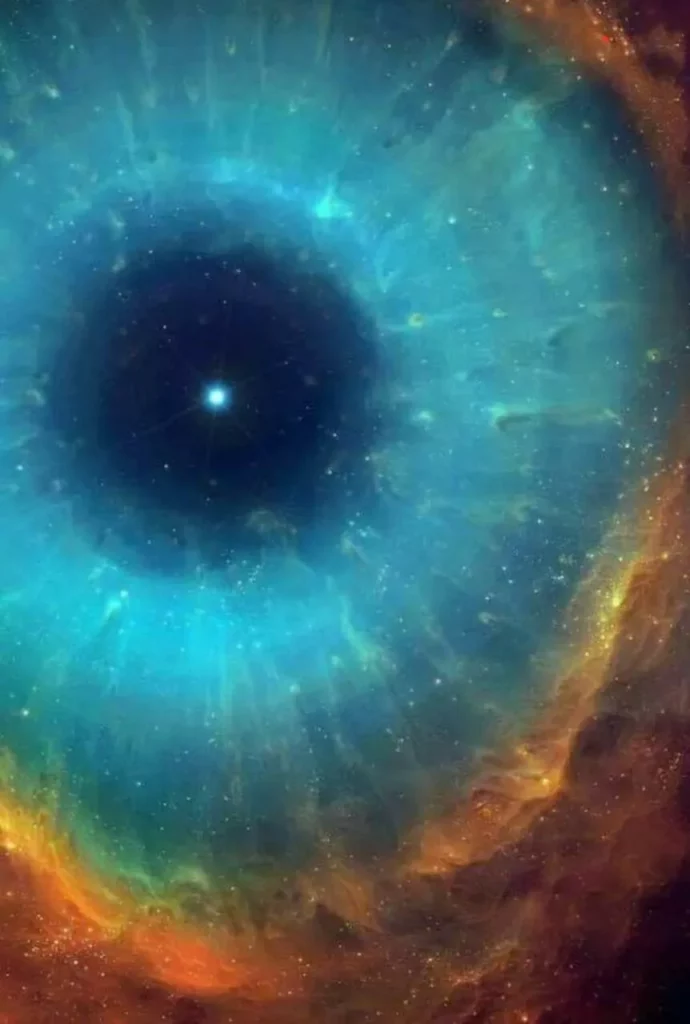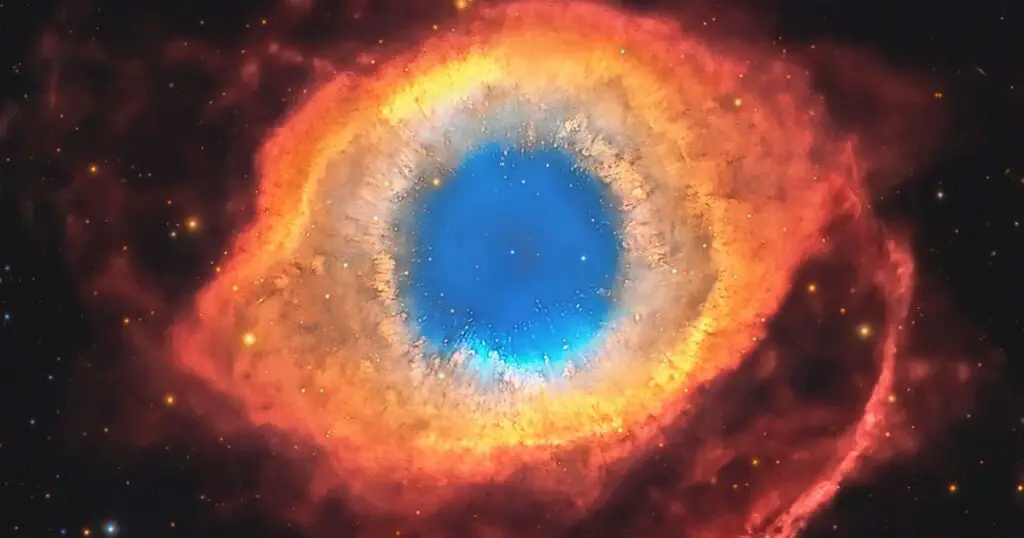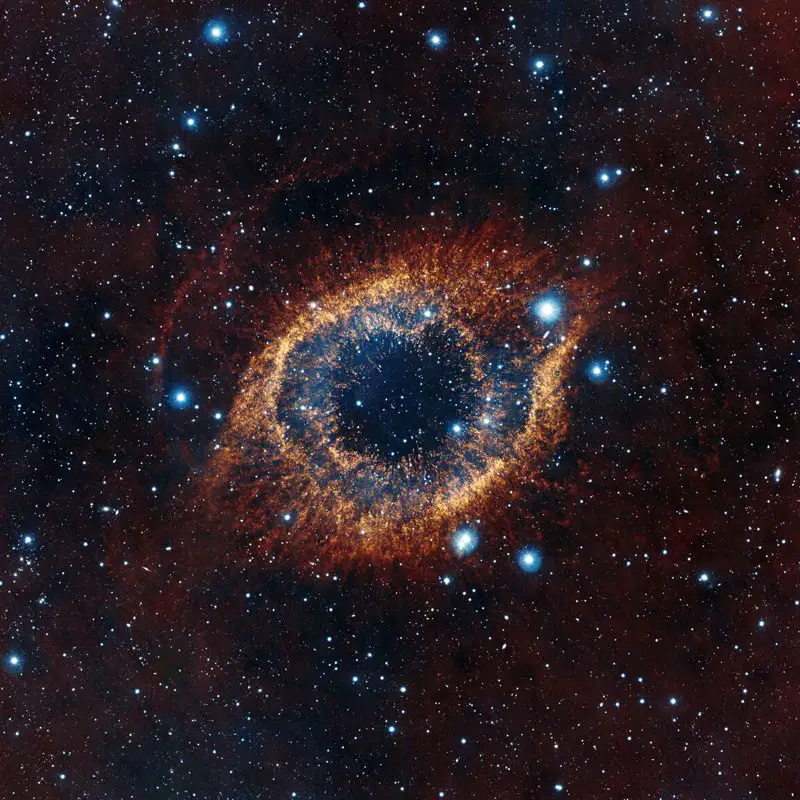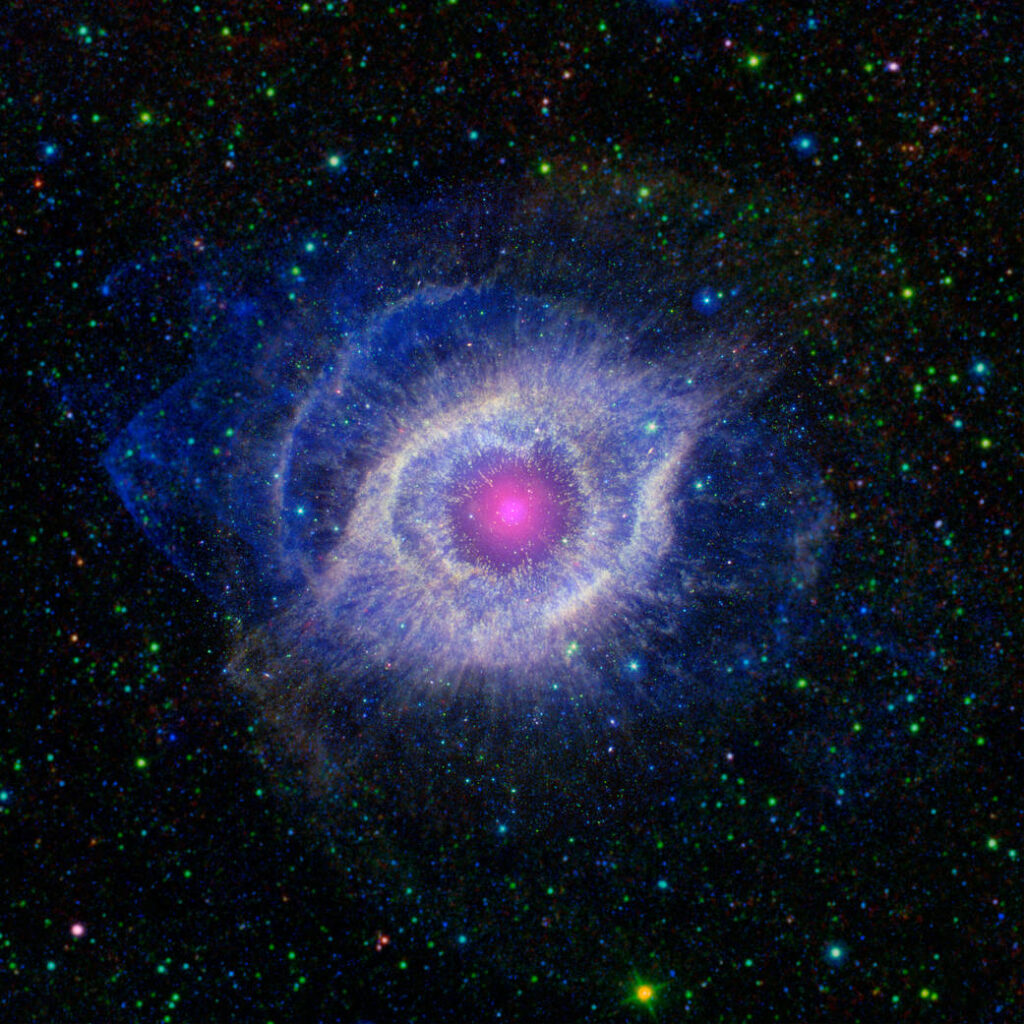Looking up at the night sky creates wonder and curiosity about the vast universe that surrounds us.

One celestial body in particular has captivated the imagination of scientists, artists and stargazers alike. It’s the Eye of God, or the Helix Nebula. Her 650 light-years from Earth, this fascinating formation seems to observe us, offering us a glimpse of the beauty and mystery of the universe.
This article looks at the science behind God’s Eye, how it came into being, and the importance of this amazing planet in the grand plan of the universe.
The Discovery of the Eye of God
Also known as NGC 7293, the Helix Nebula was first discovered by German-born astronomer Karl Ludwig Harding in the early 18th century. But it was the advent of powerful telescopes and modern imaging technology that allowed us to truly appreciate its intricate beauty and detail.

The Hubble Space Telescope, the Spitzer Space Telescope, and the European Southern Observatory’s Very Large Telescope have all played a role in capturing stunning images of the Helix Nebula, allowing us to observe its fascinating structure and dazzling colors.
The Formation of the Eye of God
The Eye of God is a planetary nebula, a type of celestial body that forms when a dying star expels its outer layers of gas and dust. As a star nears the end of its life, it begins to run out of nuclear fuel and can no longer withstand the external pressure needed to counteract gravity. As a result, the star expands into a red giant and eventually sheds its outer layers into space. Known as a white dwarf, the star’s remaining core emits ultraviolet radiation that ionizes the surrounding gas and makes it glow brightly.

Helix Nebula, the temperature of the central white dwarf is estimated to be about 120,000 Kelvin (215,000 degrees Fahrenheit), making it one of the hottest known white dwarfs. The gas and dust emitted by the red giant star forms an intricate pattern of glowing filaments, giving it its unique and attractive appearance in the eyes of God.
The Role of Dust and Gas in the Eye of God
The complex structure and vivid colors of the Helix Nebula are mainly due to the complex interaction of dust and gas. The nebula’s ionized gas absorbs and re-emits the central white dwarf’s ultraviolet light, creating a kaleidoscope of colors across the visible light spectrum. Red and green are caused by ionized hydrogen and oxygen, and blue is caused by scattered light from dust particles.

These dust particles also play an important role in the formation of new stars. Over time, the dust and gas within the nebula can coalesce under the influence of gravity, eventually forming new stars and planetary systems. In this sense, the Eye of God is not only a striking evidence of the death of stars, but also a cosmic seedbed for the birth of new celestial bodies.
The Significance of the Eye of God in the Cosmic Tapestry
The Eye of God serves as a striking reminder of the cyclical nature of the universe, with the death of one star giving rise to the birth of others. It also provides valuable insights into the processes that govern stellar evolution, helping us to understand the life cycles of stars and the forces that shape the cosmos.

Furthermore, studying the Helix Nebula allows us to better comprehend the role of gas and dust in the formation of new stars and planetary systems.
The Eye of God and Our Place in the Cosmos
Contemplation of the majesty in the eyes of God brings to mind the words of Carl Sagan. “We are the way the universe knows itself.” Studying celestial bodies like the Helix Nebula doesn’t just unlock the mysteries of the universe. But it can also reflect our own being and our place in the great cosmic tapestry. By looking into those eyes that stare at us, we are reminded of our vulnerability and our connection to the stars. God’s Eye is a humbling reminder that we are only a small part of the vast and wonderful universe, and at the same time an integral part of the ongoing cosmic history.
As we continue to unlock the mysteries of the universe, raise the eye of God as a symbol of our endless curiosity and quest for understanding, and as a testament to the beauty and wonder of the universe that surrounds us. please.


